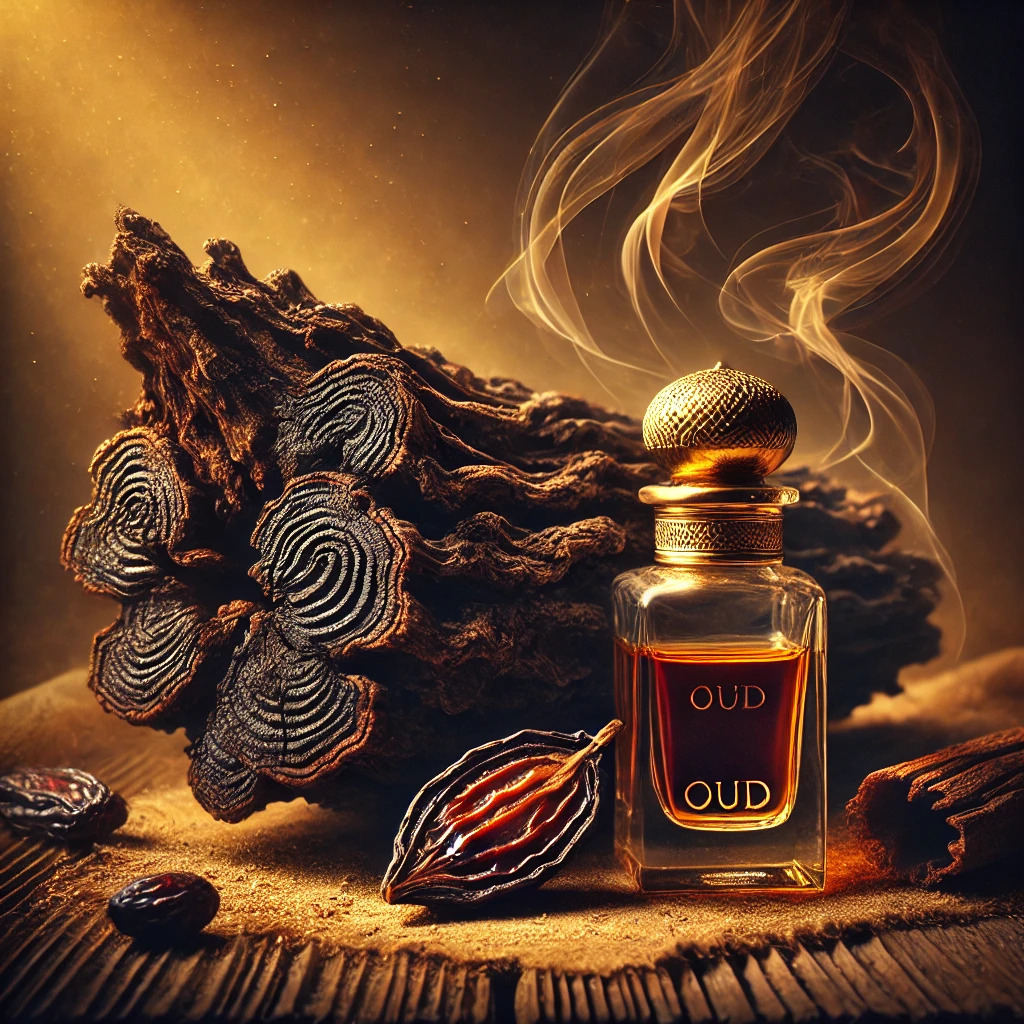Oud, also known as agarwood, holds a prestigious place in the global luxury perfume industry, renowned for its rich history and distinctive aroma. This rare and highly valued natural essence is derived from the resinous heartwood of the Aquilaria species, formed when the tree becomes infected by certain fungi. For centuries, particularly in the Middle East, Southeast Asia, and the Indian subcontinent, oud has held religious, cultural, and commercial significance. Due to its scarcity and complex extraction process, oud is one of the most expensive and sought-after fragrances in the world.

Oud Scent (Produced by AI)
Origins and Production of Oud
Oud is produced when the Aquilaria and Gyrinops tree species undergo a natural defense mechanism against fungal infection, leading to the formation of a dark, aromatic resin in the heartwood. This transformation results in the unique, deep scent that makes oud so highly prized. However, due to its rarity in nature, sustainable cultivation and artificial inoculation techniques are now widely employed to meet the high demand.
The oud production process generally follows these stages:
- Infection and Resin Formation: Naturally occurring infection can take decades, but in controlled environments, artificial inoculation accelerates resin production.
- Harvesting and Extraction: The resin-saturated wood is carefully harvested and processed through steam or water distillation, methods that influence the intensity and purity of the final oud oil.
- Aging and Maturation: The extracted oud oil is aged over time to enhance its depth and complexity, creating a richer olfactory profile.
Scent Profile and Uses
Oud possesses a complex and powerful fragrance, often described as woody, resinous, smoky, sweet, and spicy. It is widely used in luxury perfumery, religious ceremonies, and aromatherapy due to its distinctive and long-lasting character.
- Perfumery: Oud is a highly prized ingredient in high-end perfumery, used both as a standalone essence and as a base note to add depth and longevity to fragrance compositions. It is particularly favored in both Eastern and Western perfume traditions for its opulent and sensual aroma.
- Religious and Cultural Practices: In the Middle East and South Asia, oud is often burned as incense in religious rituals, meditation, and spiritual gatherings to create a sacred and serene atmosphere.
- Traditional Medicine and Aromatherapy: In Chinese and Ayurvedic medicine, oud has been historically used for its calming and therapeutic properties, believed to aid in stress relief and mental clarity.

Oud Scent (Produced by AI)
Cultural and Economic Significance
Due to its limited natural supply and intricate production, oud commands extremely high prices, often rivaling gold in value per gram. This high demand has led to illegal logging and unsustainable harvesting, prompting conservation efforts to protect Aquilaria species and promote ethical oud cultivation. Oud’s historical legacy, diverse applications, and unparalleled fragrance have solidified its place as one of the most treasured aromatic substances in the world.

